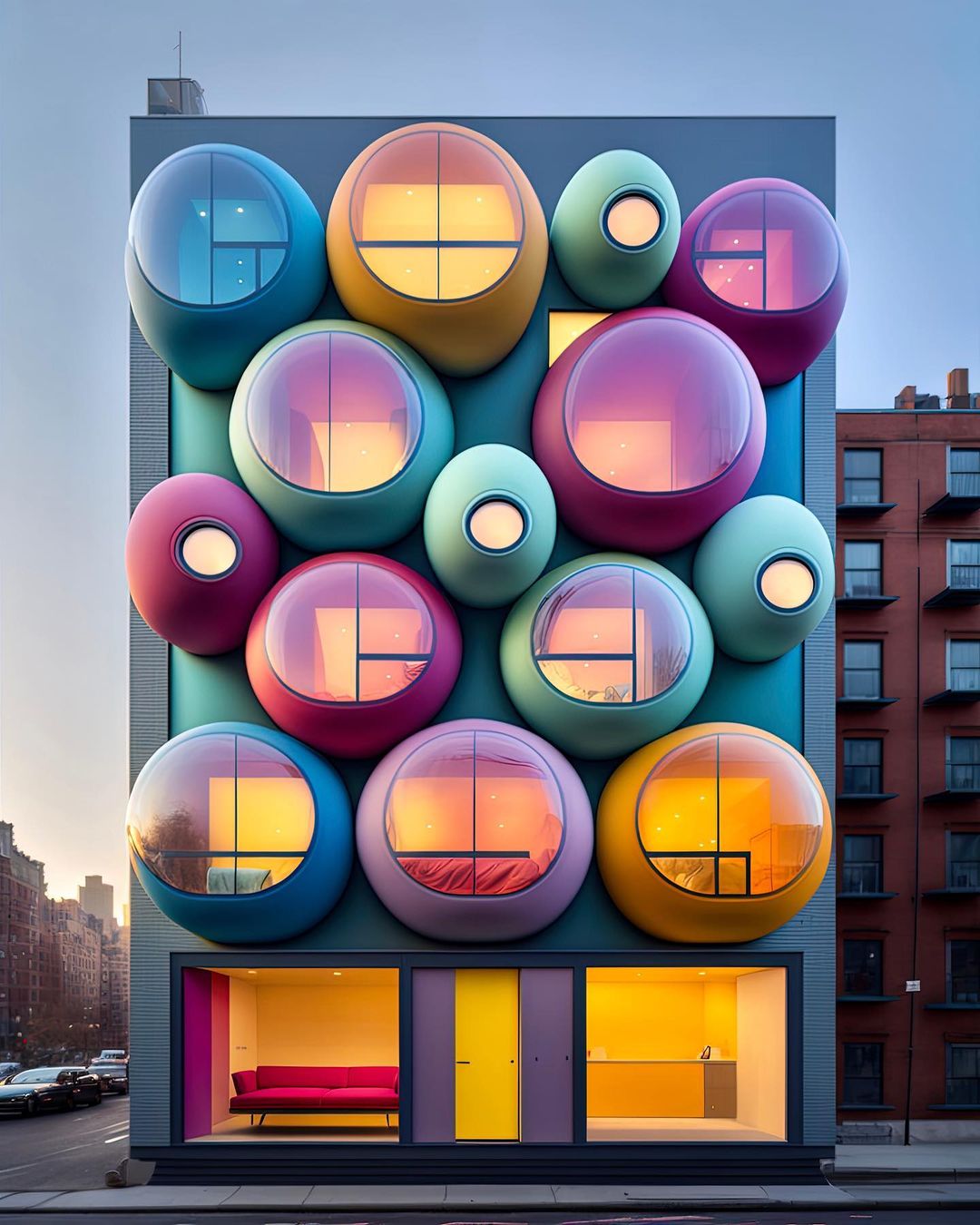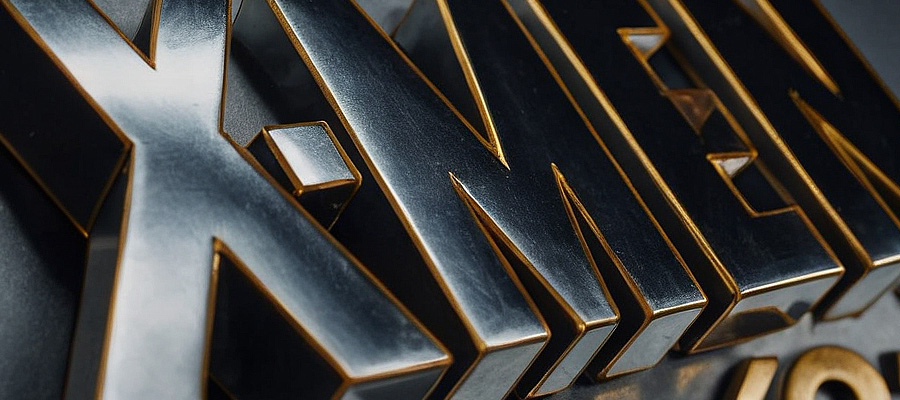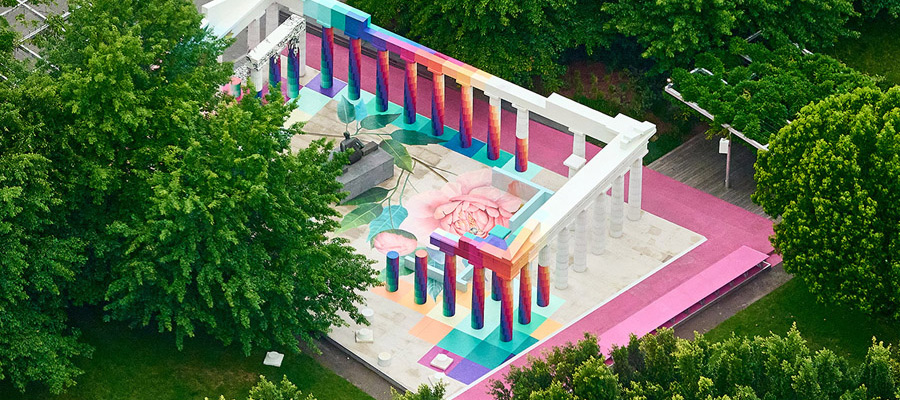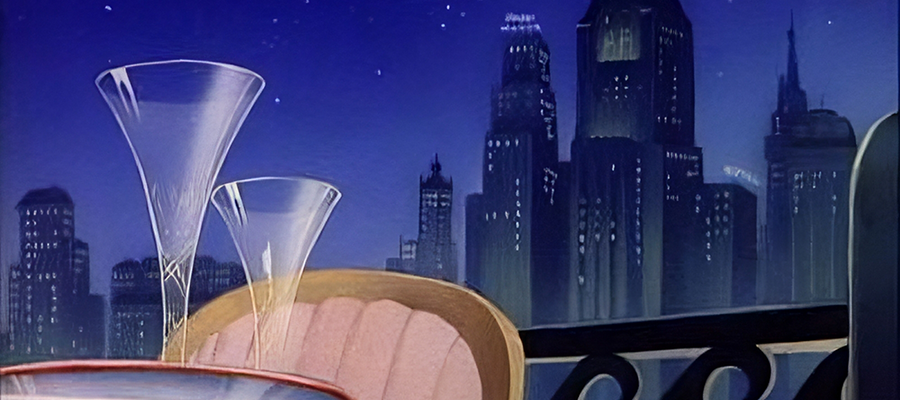The emergence of AI software in the field of architecture and design has sparked a significant shift in how professionals approach their work. With advancements in AI technology, software tools like Midjourney, DALL-E, and Stable Diffusion are transforming the creation and concept stages of designing buildings and products. This article explores the potential of AI text-to-image software and its profound impact on the future of design and architecture.
Streamlining Design Ideation and Conceptualization with AI Software



Unlocking Innovative Ideas and Concepts
AI software powered by neural networks enables architects and designers to generate ideas and concepts more efficiently. By analyzing vast amounts of data from previous projects, architectural styles, and design principles, AI algorithms provide valuable insights and inspiration, leading to the creation of unique and inspired designs.
Enhancing Efficiency in Space Utilization and Functionality
AI software plays a crucial role in optimizing space utilization and functionality. Through advanced algorithms and predictive modeling, architects can assess spatial requirements and propose optimal layouts. This results in efficient use of available space, ensuring every square foot serves its intended purpose effectively.
Personalizing Designs for User Preferences and Needs
One of the most exciting aspects of AI software is its ability to tailor designs to user preferences and needs. By analyzing user data, AI algorithms identify patterns and preferences, allowing architects and designers to create personalized spaces. Whether it's adjusting lighting conditions, room layouts, or material choices, AI software empowers professionals to craft spaces that resonate with individual users, enhancing overall satisfaction and comfort.

Advancing Sustainability in Design Practices through AI Software
Optimizing Energy Efficiency and Performance
AI software significantly contributes to advancing sustainable design practices. By utilizing complex simulations and data analysis, AI algorithms can optimize a building's energy efficiency and performance. Factors such as orientation, materials, and climate are considered to suggest design modifications that minimize energy consumption, reduce carbon footprint, and enhance overall sustainability.
Predicting and Mitigating Environmental Impact
AI software also excels in predicting and mitigating the environmental impact of construction projects. By analyzing historical and real-time data, AI algorithms evaluate potential environmental consequences and propose strategies to minimize negative effects. This empowers architects and designers to make informed decisions, ensuring their projects align with sustainable practices and regulatory requirements.
Fostering Collaboration and Communication in Design
Enhancing Design Collaboration
AI software is revolutionizing collaboration among architects, designers, and stakeholders. With AI-powered tools, teams can seamlessly share and exchange ideas, markups, and feedback in real-time. This fosters a more efficient and cohesive workflow, reducing errors and delays, ultimately leading to the delivery of exceptional design solutions.
Facilitating Client Communication
AI software improves client communication and engagement by leveraging interactive technologies like virtual reality (VR) and augmented reality (AR). Clients can visualize and experience architectural designs before construction. This immersive experience bridges the gap between the design team and clients, fostering better understanding and enabling constructive feedback.



Envision captivating virtual worlds where imaginary structures come to life, capturing the imagination of architects and designers alike. These awe-inspiring AI-generated images have captured the collective consciousness of the internet, sparking profound discussions on the future of design and architecture.
Meet Bill Cusick, the creative director at Stability AI, a company at the forefront of this transformative movement. With their groundbreaking text-to-image software, Stable Diffusion and DreamStudio, Cusick stands as a firm believer in the potential of this technology, declaring it as "the foundation for the future of creativity."
A new era of architectural design dawns, brimming with a delightful playfulness previously unseen. According to Cusick, this revolutionary software encourages designers to explore uncharted territories, infusing their creations with boundless imagination and ingenuity. The architectural sketches of yesteryear now give way to a vibrant world where colors dance and dreams take shape.
Andrew Kudless, known under the moniker Matys Design, envisions a future where AI software becomes an essential companion during the early stages of projects. As he explains, this remarkable technology replaces traditional sketching and idea generation, capturing the essence of a vision rapidly and effortlessly. AI imagery, akin to architectural sketches, becomes a vivid tapestry of colors and dreams, allowing designers to capture the essence of a project swiftly, unburdened by the constraints of precise accuracy.
Embracing this paradigm shift, Indian designer Manas Bhatia, an avid user of Midjourney, believes that AI has the potential to bridge the gap between thoughts and execution. Currently, AI serves as a powerful tool for concept generation. However, Bhatia envisions a future where AI seamlessly integrates into the overall design process, becoming an indispensable part of the creative journey.
As this revolution takes hold, labor-intensive tasks within architecture and design offices undergo a remarkable transformation. Andrew Kudless recognizes the frustration many young designers face, toiling tirelessly to produce rendering images. With the advent of AI, automation steps in, liberating designers from repetitive tasks while preserving creative control.
Nevertheless, Kudless reminds us that AI software remains a powerful tool in the hands of skilled designers, rather than a replacement for their expertise. While AI generates images based on textual inputs, it still requires human finesse to translate ideas effectively. Designers must curate hundreds or even thousands of AI-generated images, meticulously selecting and refining them to achieve remarkable results.

Beyond the realm of architecture, AI software infiltrates various domains of design, from interior design to industrial design. Interior design solutions empowered by AI exhibit tremendous promise, enabling designers to craft immersive experiences for clients. In the realm of industrial design, AI's potential is still in its nascent stages but holds the promise of gradual integration, enhancing the design process while respecting the dynamic nuances of user interaction within the physical world.
As AI design continues to evolve, pioneers like Dan Harden, an American designer from Whipsaw, anticipate its eventual convergence with the principles of embodied cognition. While AI has made strides in digital design, its application in product hardware design presents unique challenges. Yet, the possibilities of AI closing the gap between mind and body, encompassing the physical presence and influence on design, tantalize designers and fuel their relentless pursuit of progress.
Within this narrative lies a profound consideration—bias. Text-to-image technology, drawing from pools of existing images, tends to exhibit biases, favoring certain architectural styles or digitally generated aesthetics. Andrew Kudless emphasizes the need for diversifying the data, ensuring that AI software captures a broader spectrum of influences, breaking free from insular feedback loops. The emergence of image-to-image processes offers hope, enabling architects to input a diverse range of styles, thus mitigating biases ingrained within the neural networks.
In the quest for harmony between human and nature, technology assumes a pivotal role. Designers like Manas Bhatia envision a future where AI bridges the gap, uniting architecture and nature seamlessly. With extensive research in building materials and technology, Bhatia believes that architecture can converge with nature, blurring the boundaries and creating sustainable spaces that evoke the wonder of the natural world.
Yet, amidst the promises and possibilities, Andrew Kudless offers a dose of realism. Culture, he believes, will always be accompanied by biases, and utopian visions remain elusive. AI software acts as a mirror, aiding our understanding of ourselves, but the pursuit of a perfect society remains an ongoing endeavor.
As we embark on this extraordinary journey, furniture sourcing platform Clippings' co-founders predict that artificial intelligence will empower designers, acting as a catalyst for their imagination and expertise. Oliver Wainwright, an architecture critic, explores the realms of possibility by harnessing DALL-E's capabilities, weaving a speculative proposal for the Serpentine Pavilion.



Embracing the Future: AI Software Redefining Architecture and Design
As AI software continues to evolve, it is transforming the architecture and design industry. From streamlining design processes to advancing sustainable practices and fostering collaboration, AI presents limitless opportunities for professionals in these fields. By embracing AI technology, architects and designers can unlock their creativity, enhance user experiences, and shape the built environment of the future. The era of AI software is here, and it is revolutionizing the way architecture and design are approached and executed.




















